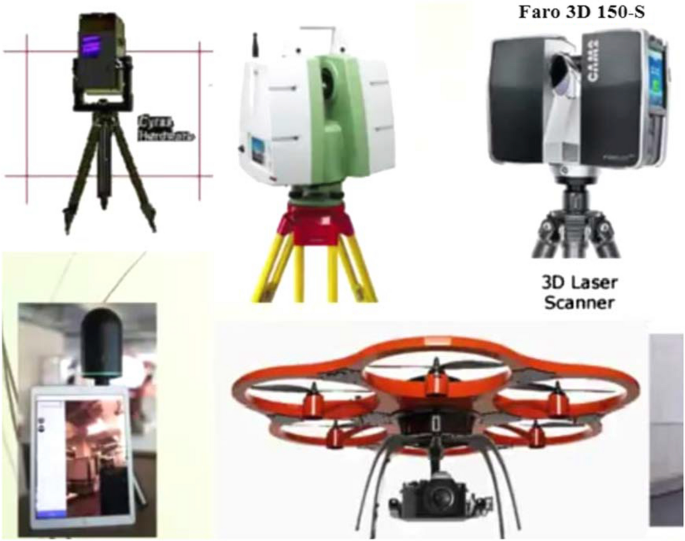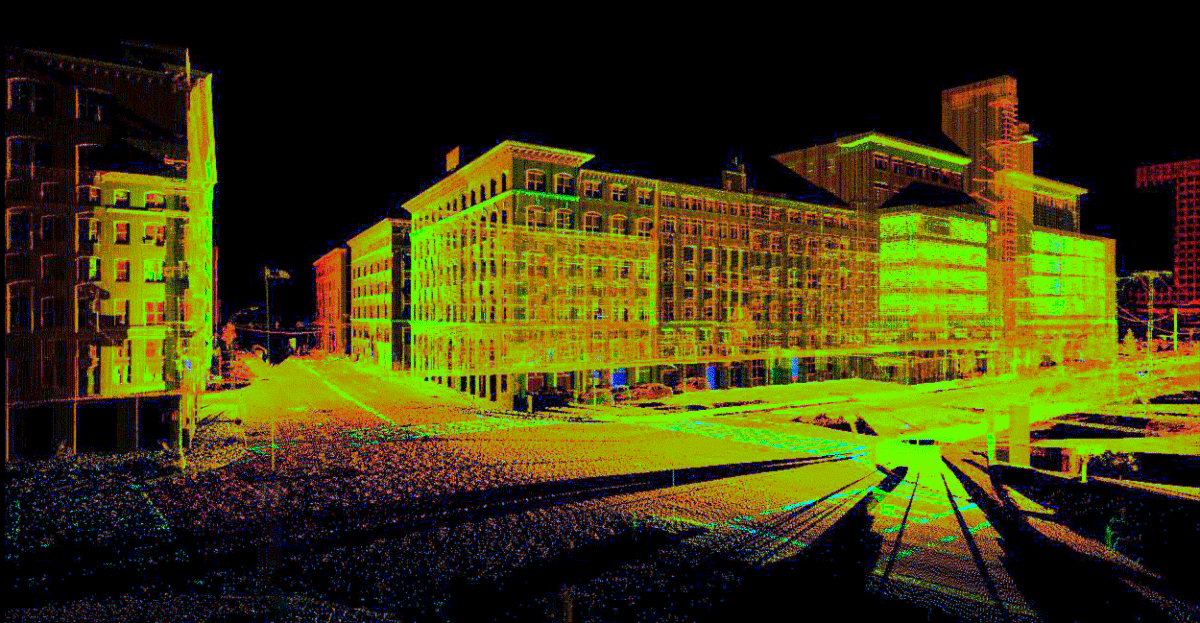Enhancing Manufacturing Processes: The Impact of 3D Laser Scanning on Quality Assurance
3D laser scanning technology is transforming high quality control in production. By supplying exact measurements and high-resolution data, it enables manufacturers to determine inconsistencies from specifications easily. This development not only enhances examination procedures however likewise improves operational performance. 3D Scanning. The application of this technology comes with its very own set of challenges. Discovering these facets exposes the broader effects for markets and the future landscape of manufacturing

Recognizing 3D Laser Scanning Technology
3D laser scanning technology has actually advanced considerably in recent years, its essential concept continues to be straightforward: catching the exact geometry of things making use of laser light beams. This technology utilizes laser light to determine ranges in between the scanner and numerous points on an item's surface area. The information collected is then processed to produce a thorough 3D design, properly mirroring the measurements and contours of the scanned object.
Usually, 3D laser scanners can be classified right into two primary types: get in touch with and non-contact scanners. Call scanners literally touch the object to gather measurements, whereas non-contact scanners make use of laser light beams to record information from a range. The convenience of this modern technology allows its application across different industries, including manufacturing, architecture, and building and construction. Its ability to generate high-resolution models assists in quality assurance, reverse engineering, and quick prototyping, eventually enhancing layout accuracy and efficiency in manufacturing processes.
Advantages of 3D Laser Scanning in Manufacturing
As manufacturers seek to improve performance and precision in their procedures, the advantages of 3D laser scanning have become significantly apparent. This innovative modern technology enables extremely exact and fast dimensions of complicated geometries, substantially minimizing the time required for top quality checks. By catching thorough data, suppliers can determine disparities early in the production procedure, thereby lessening waste and rework expenses.
3D laser scanning promotes better style recognition, enabling engineers to contrast as-built problems with original specs. This capacity assures that any inconsistencies are promptly dealt with, boosting overall product high quality. On top of that, the innovation sustains the production of electronic doubles, which can be utilized for simulations and process optimizations. Because of this, producers not only boost their functional performance yet additionally enhance their competitive advantage in the market. In general, the combination of 3D laser scanning stands for a transformative action towards attaining greater criteria in making quality control.
Integration of 3D Laser Scanning Into Quality Control
Integrating 3D laser scanning into quality assurance processes enhances the accuracy and effectiveness of assessments throughout manufacturing. This innovation allows producers to catch comprehensive, high-resolution data of settings up and parts, enabling specific dimensions and comparisons against layout specs. By utilizing 3D laser scanning, organizations can identify deviations from resistances a lot more successfully, which is important for maintaining item stability.

Real-World Applications and Study
Real-world applications of 3D laser scanning in manufacturing show its transformative influence throughout different markets. For circumstances, aerospace business utilize this technology to conduct specific examinations of parts, guaranteeing they satisfy strict safety standards. A noteworthy case entailed a leading airplane producer that used 3D laser scanning to simplify its high quality control processes, substantially minimizing evaluation times and errors.
In the vehicle industry, manufacturers have actually executed laser scanning to create electronic twins of their lorries, allowing real-time adjustments throughout production. One auto firm reported a 30% decrease in go to these guys rework expenses after incorporating this innovation right into their production line.
In the customer goods market, companies are utilizing 3D laser scanning for quick prototyping, enabling for quicker models and enhanced item layouts. These applications illustrate just how 3D laser scanning not only enhances precision but likewise boosts efficiency and advancement throughout several production domains.
Getting Rid Of Obstacles in Implementation
Carrying out 3D laser scanning in manufacturing presents several difficulties that companies must navigate to completely realize its benefits. One considerable difficulty is the initial expense of tools and software program, which can discourage business from embracing this modern technology. Additionally, integrating 3D laser scanning right into existing operations calls for conquering resistance to alter among workers, demanding comprehensive training programs to assure effectiveness. Data administration likewise presents a challenge, as the high volume of info produced by 3D scanning should be properly refined and analyzed to derive actionable understandings. Moreover, compatibility issues with legacy systems might prevent smooth assimilation, requiring prospective upgrades or alterations. Resolving these obstacles is essential for makers intending to boost quality control and optimize production processes. By establishing clear methods for training, investment, and data management, business can mitigate these obstacles and release the transformative capacity of 3D laser scanning in their operations.
Future Patterns in 3D Laser Scanning for Manufacturing
As producing proceeds to progress, the integration of 3D laser scanning with boosted automation is expected to change production processes. Boosted data analytics will certainly play a crucial role in maximizing process and improving high quality control. These trends highlight the possibility for greater performance and precision in producing environments.

Boosted Automation Assimilation
The combination of automation in production has been progressive, the future of 3D laser scanning is positioned to increase this pattern significantly. As producing procedures end up being progressively complicated, the need imp source for exact, real-time dimensions expands. 3D laser scanning modern technology uses automated information capture, minimizing labor expenses and lessening human error. This integration allows manufacturers to streamline top quality control procedures, making it possible for fast detection of discrepancies in production. In addition, the placement of 3D laser scanning with robotics and automated systems assists in seamless operations, boosting total effectiveness. As producers adopt these innovative innovations, they can expect improved precision and efficiency, positioning themselves competitively in a swiftly progressing market. The synergy in between automation and 3D laser scanning notes a considerable jump onward in producing development.
Enhanced Information Analytics
The integration of automation has actually led the way for improvements image source in data analytics within the domain name of 3D laser scanning. Producers are increasingly leveraging advanced algorithms and artificial intelligence strategies to examine vast datasets produced by laser scans. This enhanced information analytics capability permits for real-time monitoring of making processes, making it possible for the identification of issues and discrepancies extra efficiently than typical methods. Predictive analytics can predict prospective concerns, significantly lowering downtime and enhancing general efficiency. The capacity to imagine information in 3 dimensions offers deeper understandings into production operations, cultivating better decision-making. As 3D laser scanning innovation proceeds to develop, the function of information analytics will certainly come to be increasingly vital in driving technology and maintaining competitive advantage in manufacturing.
Often Asked Inquiries
What Industries Advantage the A Lot Of From 3D Laser Scanning?
The sectors that benefit most from 3D laser scanning include production, construction, aerospace, automotive, and healthcare. These industries use the innovation for precision measurements, top quality guarantee, and reliable layout procedures, substantially enhancing general operational efficiency.
How Does 3D Laser Scanning Contrast to Standard Dimension Methods?
3D laser scanning uses higher precision and speed compared to traditional dimension techniques. It catches detailed geometries quickly, reducing human mistake and helping with much better analysis, which ultimately enhances total quality control in different industries.
What Is the Price of Carrying Out 3D Laser Scanning Technology?
The price of executing 3D laser scanning technology differs considerably, typically varying from $10,000 to $100,000, depending on training, software program, and equipment. Organizations needs to weigh these costs versus potential effectiveness and quality enhancements.
Exist Specific Software Application Needs for 3D Laser Scanning?
Yes, 3D laser scanning needs certain software, including information handling and modeling applications. Common options incorporate CAD software, point cloud handling devices, and specialized applications that facilitate the combination and evaluation of checked data for optimal outcomes.
Just how Long Does a Common 3D Laser Scanning Refine Take?
A regular 3D laser scanning process can take anywhere from a few minutes to a number of hours, depending upon variables like the dimension of the object, complexity of the environment, and needed level of information for precision.
3D laser scanning modern technology is changing top quality control in manufacturing. 3D laser scanning technology has developed significantly in recent years, its essential concept continues to be uncomplicated: recording the precise geometry of things making use of laser light beams. Incorporating 3D laser scanning right into top quality control procedures boosts the precision and performance of examinations throughout production (3D Scanning). 3D laser scanning modern technology supplies automated information capture, lowering labor prices and lessening human mistake. The expense of executing 3D laser scanning innovation varies considerably, typically varying from $10,000 to $100,000, depending on training, devices, and software application